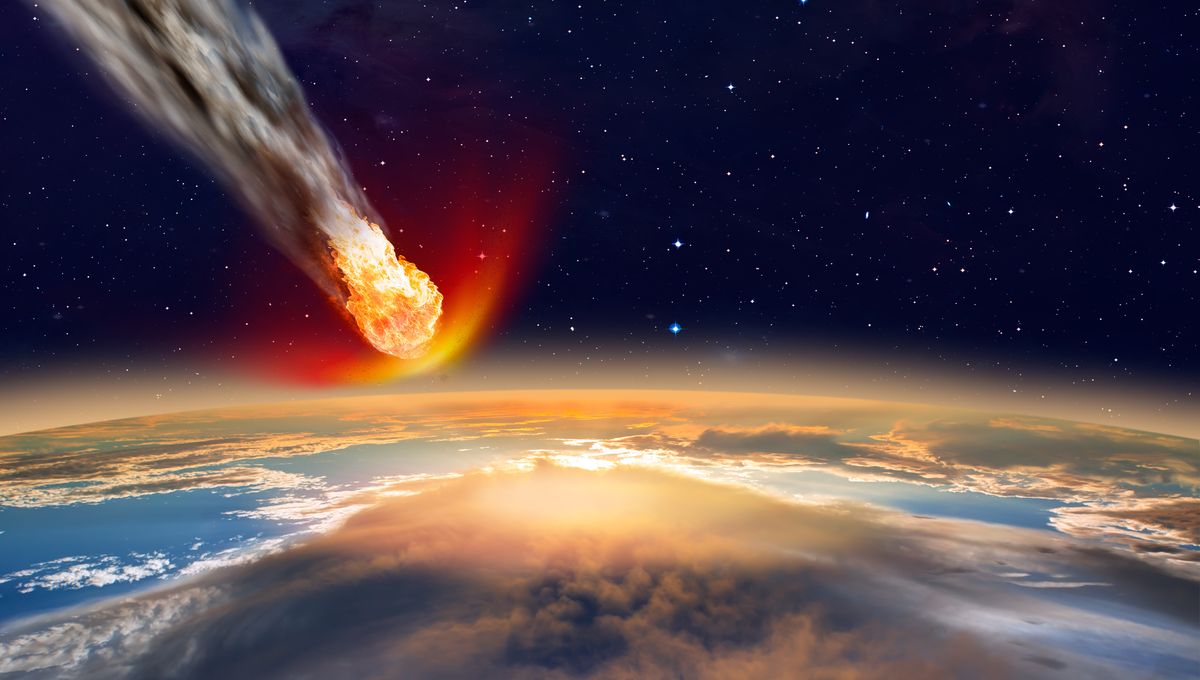
Some 66 million years ago, a massive asteroid slammed into Earth. The Chicxulub impactor, as it is called, famously wiped out the non-avian dinosaurs and left a huge crater at the edge of the Yucatán peninsula – but it may not have acted alone. New research has revealed that a second, smaller space rock smashed into our planet during the same era, creating a 9.2-kilometer (5.7-mile) crater deep below the Atlantic.
The Nadir Crater was discovered back in 2022, located off the coast of Guinea in West Africa and lying 300 meters (984 feet) under the floor of the Atlantic Ocean. It is believed to have been created at the end of the Cretaceous period, around 66 million years ago, right when Chicxulub hit. However, the exact circumstances of how it came to be have remained uncertain – until now. Thanks to the new study, which has mapped the crater in unparalleled detail, researchers have finally confirmed how it was formed.
Using high-resolution, 3D seismic data, the team was able to determine “beyond reasonable doubt” that the crater was caused by an impact.
“This is the first time that an impact structure has ever been imaged fully with high-resolution seismic data like this and it is a real treasure trove of information to help us to reconstruct how this crater formed and evolved,” study author Dr Uisdean Nicholson wrote in a Springer Nature blog post about the latest research.
“There are around 20 confirmed marine craters worldwide, and none of them has been captured in anything close to this level of detail. It’s exquisite,” Nicholson added in a separate statement.
“One way to understand it is to think about a pregnancy ultrasound. A few generations ago, the ultrasound would show a grainy blob. Now you can see the baby’s features in 3D, in incredible detail – including all the internal organs. We’ve gone from 2D, fuzzy imaging to amazing high-resolution imaging of the Nadir Crater.”
From these exceptional images, a clearer picture of what happened 66 million years ago, when the crater formed, has emerged. For instance, the team now knows that the asteroid itself was larger than previously thought, at around 450-500 meters (1,476-1,640 feet) wide. They also believe it came from around 20-40 degrees to the northeast and hit Earth at an astonishing 72,000 kilometers (44,700 miles) per hour – although this still needs to be verified with a new set of impact models.
In addition, the research has shed some light on the timeline of events following the impact.
“After the impact and the central uplift forming, the soft sediments surrounding the crater flowed inwards towards the evacuated crater floor, creating a visible ‘brim’. The earthquake shaking caused by the impact appears to have liquefied the sediments below the seabed across the entire plateau, causing faults to form below the seabed,” Nicholson explained.
“The impact was also associated with large landslides as the plateau margin collapsed below the ocean. As well as this, we see evidence for a train of tsunami waves going away from, then back towards the crater, with large resurge scars preserving evidence of this catastrophic event.”
The researchers still cannot date the event exactly but are continuing their work on the Nadir Crater to try and pinpoint when in the late Cretaceous it was formed, as well as its potential relationship with Chicxulub.
According to Nicholson, there has never been an impact of this size in human history, and so learning more about it could be illuminating – and not just for learning more about what ended the dinosaurs’ reign, but for understanding asteroid impacts in general.
“The closest humans have come to seeing something like this is the 1908 Tunguska event,” said Nicholson. “The new 3D seismic data across the whole Nadir Crater is an unprecedented opportunity to test impact crater hypotheses, develop new models of crater formation in the marine environment and understand the consequences of such an event.”
The study is published in Communications Earth & Environment.
Source Link: 9-Kilometer Impact Crater Beneath Atlantic Reveals Dino-Killing Asteroid Had A Friend